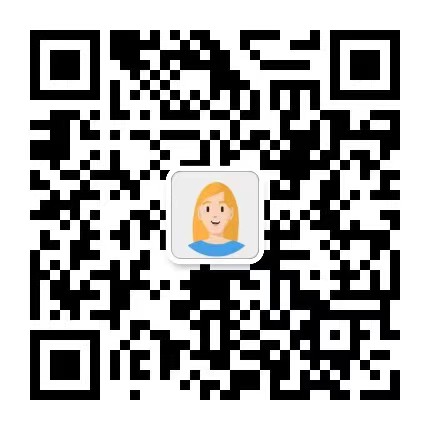BMJ:裸盖菇素治疗抑郁症的系统评价和荟萃分析
本文由小咖机器人翻译整理
期刊来源:BMJ
原文链接:https://doi.org/10.1136/bmj-2023-078084
摘要内容如下:
客观
与安慰剂或非精神活性药物相比,确定裸盖菇素作为抗抑郁药的疗效。
设计
系统评价和荟萃分析。
数据源
五个已发表文献的电子数据库(Cochrane Central Register of Controlled Trials、MEDLINE、EMBASE、Science Citation Index and Conference Proceedings Citation Index和PsycInfo)和四个未发表文献和国际文献的数据库(ClinicalTrials.gov、WHO国际临床试验注册平台、ProQuest Desertations and Theses Global和PsycExtra),以及参考文献列表、会议论文集和摘要的手工检索。
数据综合与研究质量
提取潜在治疗效果调节因子的信息,包括抑郁类型(原发性或继发性)、致幻剂的既往使用、裸盖菇素剂量、结果测量类型(临床医生评定或自我报告)和个人特征(如年龄、性别)。使用随机效应荟萃分析模型对数据进行综合,并通过亚组分析和荟萃回归研究观察到的异质性和协变量的影响。Hedges的G被用作治疗效应大小的衡量标准,以说明小样本效应和纳入研究的样本量之间的实质性差异。使用Cochrane s Risk of Bias 2工具评估研究质量,并使用GRADE指南评估汇总证据的质量。
资格标准
在随机试验中,裸盖菇素作为一种独立的治疗方法,用于治疗具有临床显著抑郁症状的成年人,并使用有效的临床医生评定或自我报告量表来衡量症状的变化。如果心理治疗成分在实验和对照条件下都存在,则包括指导性心理治疗的研究。患有抑郁症的参与者,无论是否患有合并症(如癌症),均符合条件。
结果
对9项纳入研究中的7项研究的436名参与者(228名女性参与者)(平均年龄36-60岁)进行的荟萃分析显示,与对照治疗相比,裸盖菇素(Hedges G=1.64,95%置信区间(CI)0.55至2.73,P<0.001)对抑郁评分的变化有显著益处。亚组分析和元回归分析表明,患有继发性抑郁症(Hedges G=3.25,95%CI 0.97至5.53)、使用自我报告的抑郁量表(如Beck抑郁量表)进行评估(3.25,0.97至5.53)、年龄较大和既往使用致幻剂(元回归系数分别为0.16,95%CI 0.08至0.24和4.2,1.5至6.9)与症状改善较大相关。所有研究的偏倚风险均较低,但基线指标的变化与高度异质性和小研究偏倚的统计学显著风险相关,导致证据评级的确定性较低。
结论
在继发性抑郁症患者中,当使用自我报告量表测量抑郁症症状时,以及当参与者以前使用过致幻剂时,裸盖菇素的治疗效果显著更大。因此,需要进一步的研究来描述预期效应、调节因素和治疗给药对裸盖菇素作为抗抑郁药的疗效的影响。
系统评价注册
普洛斯彼罗CRD42023388065。
英文原文如下:
Abstracts
OBJECTIVE To determine the efficacy of psilocybin as an antidepressant compared with placebo or non-psychoactive drugs.
DESIGN Systematic review and meta-analysis.
DATA SOURCES Five electronic databases of published literature (Cochrane Central Register of Controlled Trials, Medline, Embase, Science Citation Index and Conference Proceedings Citation Index, and PsycInfo) and four databases of unpublished and international literature (ClinicalTrials.gov, WHO International Clinical Trials Registry Platform, ProQuest Dissertations and Theses Global, and PsycEXTRA), and handsearching of reference lists, conference proceedings, and abstracts.
DATA SYNTHESIS AND STUDY QUALITY Information on potential treatment effect moderators was extracted, including depression type (primary or secondary), previous use of psychedelics, psilocybin dosage, type of outcome measure (clinician rated or self-reported), and personal characteristics (eg, age, sex). Data were synthesised using a random effects meta-analysis model, and observed heterogeneity and the effect of covariates were investigated with subgroup analyses and metaregression. Hedges' g was used as a measure of treatment effect size, to account for small sample effects and substantial differences between the included studies' sample sizes. Study quality was appraised using Cochrane's Risk of Bias 2 tool, and the quality of the aggregated evidence was evaluated using GRADE guidelines.
ELIGIBILITY CRITERIA Randomised trials in which psilocybin was administered as a standalone treatment for adults with clinically significant symptoms of depression and change in symptoms was measured using a validated clinician rated or self-report scale. Studies with directive psychotherapy were included if the psychotherapeutic component was present in both experimental and control conditions. Participants with depression regardless of comorbidities (eg, cancer) were eligible.
RESULTS Meta-analysis on 436 participants (228 female participants), average age 36-60 years, from seven of the nine included studies showed a significant benefit of psilocybin (Hedges' g=1.64, 95% confidence interval (CI) 0.55 to 2.73, P<0.001) on change in depression scores compared with comparator treatment. Subgroup analyses and metaregressions indicated that having secondary depression (Hedges' g=3.25, 95% CI 0.97 to 5.53), being assessed with self-report depression scales such as the Beck depression inventory (3.25, 0.97 to 5.53), and older age and previous use of psychedelics (metaregression coefficient 0.16, 95% CI 0.08 to 0.24 and 4.2, 1.5 to 6.9, respectively) were correlated with greater improvements in symptoms. All studies had a low risk of bias, but the change from baseline metric was associated with high heterogeneity and a statistically significant risk of small study bias, resulting in a low certainty of evidence rating.
CONCLUSION Treatment effects of psilocybin were significantly larger among patients with secondary depression, when self-report scales were used to measure symptoms of depression, and when participants had previously used psychedelics. Further research is thus required to delineate the influence of expectancy effects, moderating factors, and treatment delivery on the efficacy of psilocybin as an antidepressant.
SYSTEMATIC REVIEW REGISTRATION PROSPERO CRD42023388065.
-----------分割线---------
点击链接:https://www.mediecogroup.com/community/user/vip/categories/ ,成为医咖会员,获取12项专属权益。




